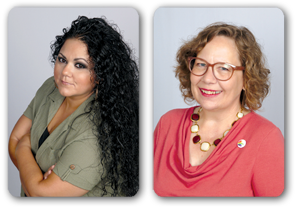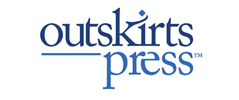Self-Publishing with a Full-Service Book Publisher
Learn everything you need to know about self-publishing.
If you’re reading this, you probably know a thing or two about self-publishing already. You found this guide because you know that book self-publishing is a viable option for many authors, and you know that Outskirts Press offers excellent guidance on working with a full-service self-publishing company.
Still, let’s make sure we’re, eh-hem, all on the same page.
Let’s start with a brief discussion about why you may want to self-publish and do so with Outskirts Press—and then we hope you’ll keep reading this tip sheet in preparation for this exciting journey toward becoming a self-published author.
Self-Publishing Has Risen to Meet—and Sometimes Surpass—Traditional Publishing
Working with a traditional book publisher remains a great option for many authors. It is, of course, exciting and validating to be “chosen” as “worthy” enough to be published. And it’s wonderful to have at least some of the costs covered by someone else. And it’s helpful to have the heft of a publisher’s name behind your title during the marketing phase of the process.
Thankfully, high-quality, full-service self-publishing companies continue to rise to meet those benefits—and to offer positives even where traditional houses may fall short. We say “thankfully” because not every author has the time or the luck to be picked up by a traditional publishing house. Just because you’ve written a brilliant book doesn’t mean it will land with the right acquisitions editor at the right moment, and even a rejection may take months of querying and submitting to reach you.
 These days, self-publishing technology and process allow authors an equitable option to traditional publishing so that even famous or experienced authors choose that route. It’s not just new writers, like Andy Weir when he self-published The Martian, who choose self-publishing as their “only” option or as a stepping-stone to something “bigger and better.” As you may recall, The Martian ultimately became a Hollywood blockbuster, leading to Weir becoming an established writer with multiple books to his name.
These days, self-publishing technology and process allow authors an equitable option to traditional publishing so that even famous or experienced authors choose that route. It’s not just new writers, like Andy Weir when he self-published The Martian, who choose self-publishing as their “only” option or as a stepping-stone to something “bigger and better.” As you may recall, The Martian ultimately became a Hollywood blockbuster, leading to Weir becoming an established writer with multiple books to his name.
In 2022, Brandon Sanderson broke Kickstarter records when he raised $15.4 million to self-publish his subsequent four novels in twenty-four hours. By the end of the campaign, more than 185,000 individuals had pledged more than $41.5 million. Sanderson had already published with Tor (owned by Macmillan) and Delacorte Press (owned by Penguin Random House)—yet he’d dreamed of crowdfunding books and publishing on his own terms.

Image copyright Kickstarter and Brandon Sanderson.
Sanderson himself has been quick to note that self-publishing is not the path for every author—and the way he did it, big and bold, means that he actually formed a publishing company to self-publish; he employs thirty people, including marketing, editing, and design staff; has a warehouse; and travels up to a third of each year to network and sell in person.
What Sanderson built for himself as a large-scale self-published author is something Outskirts Press offers each and every author—whether you dream of making it big globally or want a few really well-done copies of your memoir for your family.
- We’ve got a team of editing, design, and marketing professionals. You don’t have to search for and hire each person individually on your own. We also never pressure you to spend money on a bigger team than you want—use only the services you need.
- We use print-on-demand (POD) technology, so you don’t need a warehouse to store extra copies of your book; simply order more when you need them.
- Meeting readers in person is never a bad idea, but our sales and marketing experts also have great suggestions for local or online ideas.
- We help you produce the strongest book you can. First, we review each manuscript before working with an author, checking for serious issues, like copyright or libel concerns. Then if we work together, we suggest publishing services that may help polish your book.
- We have more than twenty years of quality work behind our name. By publishing with Outskirts Press, you have the power of an excellent publisher’s name supporting your title!
That is why it may make sense for you to publish with Outskirts Press: a full-service publishing company that offers the benefits of self-publishing combined with the benefits of a traditional publisher of books.
Here are just a few more reasons:
Control
Traditional publishers are all about gatekeeping: most require authors to have an agent (which you receive by submitting your manuscript and waiting and hoping), who then helps you submit your manuscript to the publishers; there, your manuscript may sit in what’s called a “slush pile” before an intern, assistant, or volunteer reads it, and, if they like it, passes it on to the press’s editors, who must not only like it themselves but convince other departments, like marketing, that they should publish the book.
With self-publishing, you—the author—decide when your manuscript is worthy of publication. Outskirts Press evaluates every prospective title so that you can be confident you won’t run into any legal issues around copyright, libel, and the like, but we don’t pass other judgments.
Quality
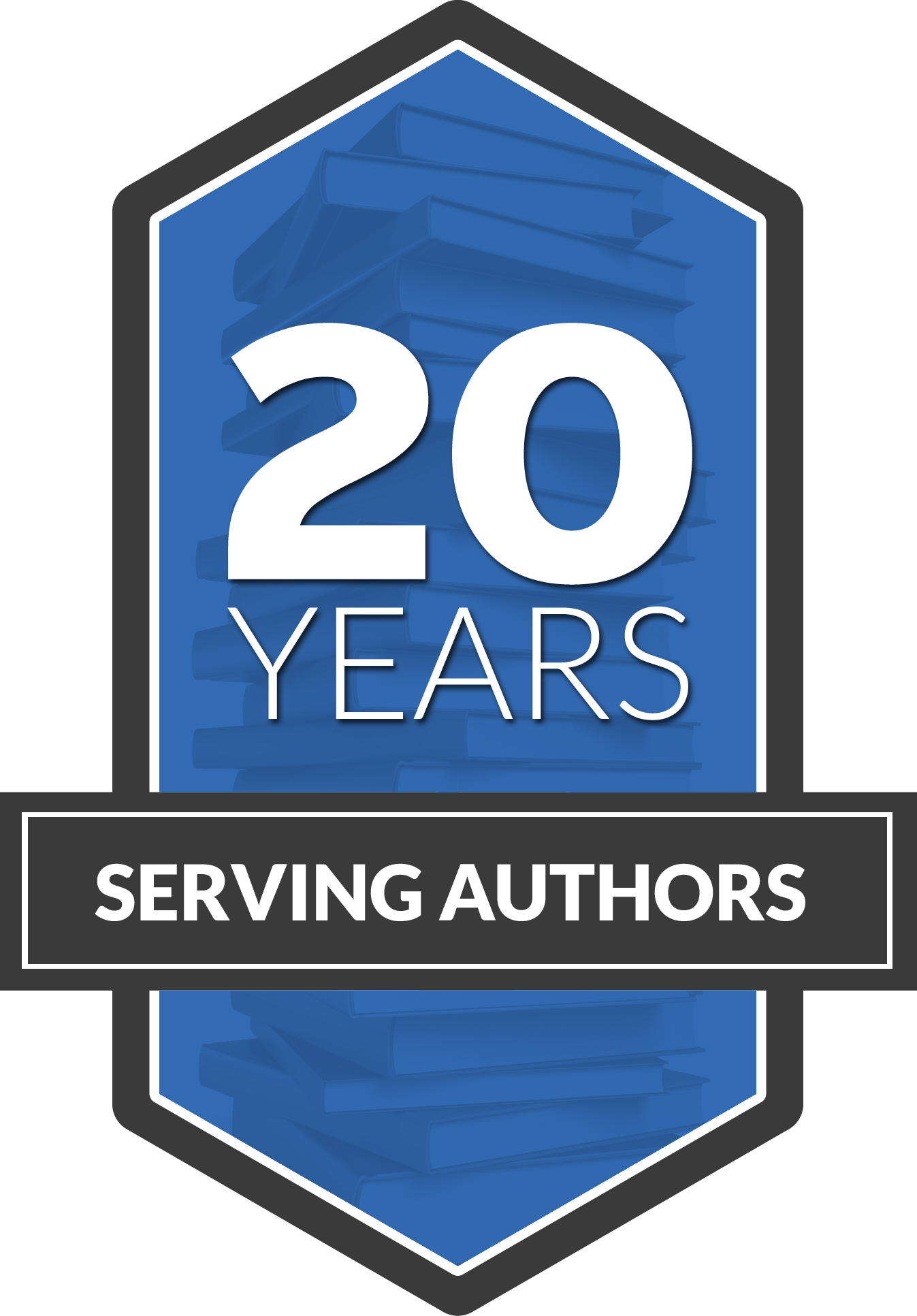 Our openness to helping authors publish doesn’t mean we hold back on offering our guidance. We have helped authors publish their books since 2002, so we have a lot of expertise in the book business. We offer services from professional editing to cover design and marketing advice and beyond. (In other words, Outskirts Press has already created the same kind of self-publishing company that Sanderson had to make for himself to be the powerhouse self-published author he wanted to be.)
Our openness to helping authors publish doesn’t mean we hold back on offering our guidance. We have helped authors publish their books since 2002, so we have a lot of expertise in the book business. We offer services from professional editing to cover design and marketing advice and beyond. (In other words, Outskirts Press has already created the same kind of self-publishing company that Sanderson had to make for himself to be the powerhouse self-published author he wanted to be.)
We suggest to authors what we think they may want to consider for their project, but we never force authors to buy more than they need; after all, not only is each book unique but so are each author’s goals. Also, POD technology allows authors to choose from various formatting options, many of which traditional presses won’t offer. Together, we are each left to do what we do best: Outskirts Press experts to the book publishing process; you to writing and making the decisions that meet your vision.
Speed
As previously mentioned, attempting to publish a book with a traditional press can take years, literally—and at the end of that time, you may not have received a yes; in fact, you may have received little more than perplexing silence. Self-publishing shortens those years to months, sometimes even weeks. Remember, you decide when your manuscript is ready to hit the shelves. By self-publishing, authors don’t have to wait to see their books in print, and your books won’t languish in a slush pile, losing relevance to current affairs or reading trends.
A healthy book publishing ecosystem, including self-publishing, leads to a diversity of published authors and books. Self-publishing isn’t about building a catalog of books that appeal to as many people as possible; it’s about publishing the book you want to write for the people who want to read it, and an audience of one may indicate as much success as an audience of one million.
If you want to be a published writer—not wait forever for only the possibility of a yes from a traditional publisher or learn how to be a book publisher by building your own team, expert by expert—the thriving, exciting, high-quality world of full-service self-publishing might be for you. Read on to learn a little more about the process.
The Basic Outskirts Press Journey
Your journey is as simple or as complex as you want! The basic structure is this:
- Submit your manuscript to Outskirts Press so we can make sure there are no concerns you can’t fix with us by your side.
- Connect with your own Publishing Consultant, who can help guide you through the process.
- Choose the publishing package and any add-ons that are right for you.
- Let us take it from there as you stay the lead of your project with the final say over every decision.
Understanding a Few of the Basics of the Self-Publishing Process
Common Pitfalls
Avoiding these five basic—but tempting!—shortcuts will give your book a fighting chance out in the world.
Designing the interior yourself.
Many books may look like they’re just a stack of word-processed pages with a spine, but even the simplest layout—no images, no headers, etc.—requires special skill to look good between the covers. Book designers have a long checklist of details they watch out for and adjust.
Designing the cover yourself.
Unless you currently work as a book designer, resist the temptation to design your own cover. Your beautiful homemade Christmas cards may earn rave reviews from their recipients, or you may have a degree in art or even worked in a company’s art department designing catalogs or swag. However, that doesn’t mean you know the latest book cover standards or trends.
Also, resist the urge to find a loophole in this pitfall and use a generic cover. You may wonder, “Why pay for a cover designer when I can slap a stock photo on my cover or make the cover art just the book title in bold font?” You should not do this because a generic cover will look to a potential buyer as . . . generic. And they wonder, “Why would I want to spend my money and time on a ho-hum, same-old book?” Feel free to use these in your mockups, but only to help express your vision to your professional cover designer.
Editing your own work.
Everyone needs an editor. Even the most successful author on the market, even your English teacher, even that friend who finds “every” mistake in the newspaper—they all benefit from having an editor. Not only is a writer too close to their own work to see its errors fully, but that writer is also an inherently fallible human, and nothing can change that. And for the same reason you shouldn’t design your own cover even if you have an artistic bent, you also shouldn’t rely solely on your grammar-savvy friend, relative, or even writing group buddy to edit your work.
Skipping the back cover.
Have you ever read a book without a back cover pitch or author photo and bio? Probably not. Most people who are browsing a bookstore are drawn in by a cover, pick up the book... and turn it over to read the back. It’s the same with online browsing too. Search algorithms rely on keywords to help people find what they’re looking for, and back cover information supplies some of those keywords.
Rushing the process.
We count the speed of publishing as one of the positives of self-publishing, but speed isn’t the same as rushing. Producing a quality book with an attractive cover and well-crafted and well-designed pages takes time and care, even when you’re in the driver’s seat. So be active and forward-moving but not impatient.
Understanding Cost
There is no one simple answer to this—and if anyone tries to convince you otherwise, they are treating books like toilet paper. While a book is a mere product on one level, it’s also an investment, unlike many other tangible commodities. A book costs and is worth more than the paper it’s printed on.
A customized cover design and a professionally edited manuscript may mean the difference between a reader putting your book in the cart or placing it back on the shelf. A professionally developed marketing plan may be the only reason your book caught a book buyer’s eye to put your book before that reader in the first place. It can be easy to focus on how much a book will cost now rather than how it can make money in the future.
Authors spend different amounts of money on publishing their books for a variety of reasons, including:
- How much they polished their manuscript before starting the publishing process
- How many resources do they contribute (e.g., they can provide images they own for the cover)
- Their book publishing goals (e.g., publishing for their children may require a different quality of book than publishing to catch Oprah’s eye)
As much as we want to emphasize that book publishing costs vary, we also know that authors still want to know, “Will publishing my book cost me five dollars or five million?” So, with one more reminder that the cost can, and will, vary, we suggest that the average up-front cost range for full-service self-publication falls between $999 and $3,000.
Understanding Industry Terms & Laws
This brief section introduces you to a few common concepts you will likely hear as you prepare to publish.
ISBN
An International Standard Book Number (ISBN) is a unique, thirteen-digit identifying code for a book, like a Social Security number for a person in the United States.
While there is no law that a book must have an ISBN to be sold, it is such a common practice that an author should ensure each of their titles has one. Outskirts Press handles the details of creating and registering their authors’ ISBNS.
BISAC
Thousands of Book Industry Standards and Communications (BISAC) designations and nine-character alphanumeric codes represent genres or subject matter. You determine what BISAC(s) your book is categorized as, and it’s an important decision, as these codes help booksellers and librarians search for what they want to order and then correctly shelve each book. Your Publishing Consultant is happy to help you explore the BISAC list.
Copyright & Libel
These terms relate to laws around you and your work and others and their work.
- Your book is copyrighted because it is written. Copyright is automatic. You don’t have to wait for publication or register your book for you to own its content.
- Filing with the U.S. Copyright Office is still recommended so that you have a public record of ownership. Outskirts Press can help you do this if you wish.
- Just as you own the copyright for your original writing, the people who produced any material you may include in your book—a photo, quote, map, data set, song, etc.—own what they created. Outskirts Press helps you identify the information you have borrowed; together, you can start to determine if you can merely cite the information and use it under what’s called “fair use” or if you must seek permission from its creator to use it. First, the owner will probably ask to understand how you are using their work. Then they are allowed to reject your request or charge you money, or they may allow you to use it for credit only.
- Authors must consider libel issues if they accuse someone of something while using their real name or other identifying marks. Outskirts Press helps its authors spot these possible issues.
Understanding Format
Every type of book has benefits and drawbacks: paperback, hardcover, eBook, and audiobook.
Paperbacks
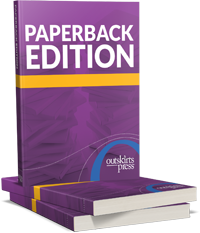 Paperback books are cheaper to produce, cheaper to buy, and easier to carry than hardcover books. Because of this, if deciding on a physical copy of a book, readers will often choose the paperback. However, they are less durable than hardcover books and don’t have that “collectible” feel.
Paperback books are cheaper to produce, cheaper to buy, and easier to carry than hardcover books. Because of this, if deciding on a physical copy of a book, readers will often choose the paperback. However, they are less durable than hardcover books and don’t have that “collectible” feel.
Hardcovers
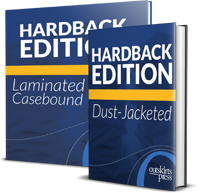 Hardcover books are durable, look good on display (there’s nothing quite like a stack of hardcovers at an author’s autographing table), and make great gifts. Unfortunately, they are more expensive to produce and are less transportable than other types of books.
Hardcover books are durable, look good on display (there’s nothing quite like a stack of hardcovers at an author’s autographing table), and make great gifts. Unfortunately, they are more expensive to produce and are less transportable than other types of books.
eBooks
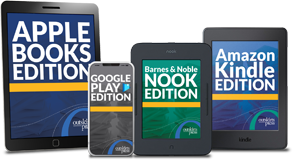 eBooks don’t cost anything to produce—they require a layout process separate from other formats, for example—but they cost less for readers to buy, and they are incredibly easy to carry. In most cases, it makes a lot of sense to publish an electronic version of your book, even if you’re also publishing a paper version. More and more schools are adopting e-textbooks or encouraging their students to buy the eBook version. Most people always have an “eReader” on them (i.e., a smartphone). During COVID-19 lockdowns and supply chain issues, the eBook was often the most accessible version to obtain.
eBooks don’t cost anything to produce—they require a layout process separate from other formats, for example—but they cost less for readers to buy, and they are incredibly easy to carry. In most cases, it makes a lot of sense to publish an electronic version of your book, even if you’re also publishing a paper version. More and more schools are adopting e-textbooks or encouraging their students to buy the eBook version. Most people always have an “eReader” on them (i.e., a smartphone). During COVID-19 lockdowns and supply chain issues, the eBook was often the most accessible version to obtain.
Audiobooks
 A delight for commuters, people doing chores, folks with poor vision, and others, audiobooks have risen in sales every year between 2012 and 2022. Some experts say nearly half of all adult Americans have listened to audiobooks. By percentage of sales, adult fiction, particularly science fiction, fantasy, mysteries/thrillers, and romance, make for the most popular audiobooks. Depending on your genre and audience (and budget), you may want to consider publishing an audiobook in addition to another format(s).
A delight for commuters, people doing chores, folks with poor vision, and others, audiobooks have risen in sales every year between 2012 and 2022. Some experts say nearly half of all adult Americans have listened to audiobooks. By percentage of sales, adult fiction, particularly science fiction, fantasy, mysteries/thrillers, and romance, make for the most popular audiobooks. Depending on your genre and audience (and budget), you may want to consider publishing an audiobook in addition to another format(s).
Understanding Editing
You’ve spent weeks, months, maybe even years writing your book. After all that time and effort, don’t stop short of perfecting that writing! Obviously, flawed writing is not taken as seriously as polished writing is. (And though it shouldn’t be the case, self-published books are often scrutinized more heavily than traditionally published ones. So, it may be extra important that you step your very best foot forward to attract readers.) Editors can help polish up that gem you have invested so much time and effort into producing.
A professional editor will help you do this. Unlike you, they are not so close to your writing that they could recite passages in their sleep; in other words, they will more easily be able to spot errors. They also are experts in writing rules (including how and when to break them) and industry standards.
Most books adhere to the guidelines The Chicago Manual of Style (CMS) set forth. CMS recommends specific ways in which everything—from numbers to hyphens, to context-specific spellings, to literary allusions and references—must be carried out. Careful attention to CMS guidelines and a project-specific style guide the editor will create as they work will ensure that a book feels consistent and reads smoothly.
Copy editors will track errors in continuity, such as involving a character’s appearance, habitual gestures, or geographical location; proofreaders will look for errors like an author using both “OK” and “okay” in one book. And you will review their changes and make the final call; these are your words, after all.
Understanding Layout & Cover Design
Pop quiz:
Should you double-space or single-space your book’s lines?
Should you indent and/or leave an extra line between paragraphs?
Should you include headers and footers?
How should you number the pages, and should new chapters or sections always start on a particular page?
How big should page margins be?
Is it OK if a word breaks at the end of a line?
Is it OK if a page starts with the last word of a paragraph?
What typeface or font size should you use?
How do you lay out a manuscript for a paperback versus a hardcover versus all the many different types of eReader software?
What elements, other than the book content itself, should you include?
To how many of those questions did you have well-reasoned answers? How many questions did you not understand enough to try to answer? Your professional book designer knows the answers—and how to check for and correct unexpected glitches.
You also want to work with a professional cover designer. We’re not going to give you another pop quiz, this time about resolution, bleed, spine width, barcoding, how a cover looks in a reader’s hand and in a thumbnail image in an online catalog, and trends...but that’s only because we know that, by now, you understand. As the author, you have valid ideas about your cover, but the realities of book publishing technology and savvy book buyers mean you need to hire a pro to help you turn your vision into an innovative and successful cover. Think of it this way: you have intelligent questions and intimate knowledge of your health, but you still seek professional medical help.
Understanding Book Marketing
Gone is the time of the writer who gets to spend all day every day in a cabin by themselves. Now, whether you publish with a traditional book publisher or a self-publisher, you must be available for and maybe even take the lead on marketing your book. And gone are the days when books “sell themselves” (was there ever a time for that?). Thanks to the internet serving as a giant store filled with all the world’s books, and to ever-improving book publishing technology allowing more and more people to publish quality books, millions of titles compete for readers’ attention. Unless you’re Zeus-level famous, no one is waiting around for your book. But many people will be excited to learn about your book and consider reading it—you just must tell them about it!
Before you do so, make sure you know a few things:
- Define your brand and your book’s message. What’s your thirty-second elevator pitch?
- Set your goals. Are you publishing to share a great story, establish yourself as a thought leader in your industry, or make a lot of money from book sales?
- Know your audience. Who will want to read your book, and where do they “live” in real life and online? Get granular about the who (the answer to “Who would like your book?” is never “Everyone!”) and focus your efforts on meeting them where they are at.
- Brainstorm marketing ideas, both the “must-dos” (e.g., sending copies of your book to reviewers and contests) and the out-of-the-box ones (e.g., hosting a local-celebrity bake-off at which you’ll promote your cookbook).
- List your connections, like your local bookstores, your friends’ and family members’ local stores, your local media, the community groups you’re involved in, your workplace, and your kids’ or grandchildren’s schools. You’re thinking about individuals who may help you market, places where you could host an event, or places that may have events you as an author should be a part of (e.g., a table at a holiday bazaar or offer a copy of your book to a silent auction).
- Establish or spruce up your online presence as an author.
- Network in real life.
- Set a marketing budget.
Outskirts Press can help you create a marketing kit, which may include:
- A sales sheet of compelling information that directs booksellers and librarians to buy or entices journalists to write about your release
- Book reviews
- A link to a digital sample of your book
- A press release
- Promotional materials like business cards or bookmarks
We hope this article has helped to ground you in the self-publishing process and inspire you to take the next step on this exciting journey. You’ve written a great book; now is your moment to shine! Let the world read what you have to say.
Outskirts Press is passionate about helping you publish your passion.
We do so with expertise and ease, providing every author a Publishing Consultant to serve as your guide when working with our team of editors, designers, and marketers, and offering publishing packages so that, with just one click, you can be on your way. We look forward to hearing from you!
Call 1-888-672-6657
Live chat at OutskirtsPress.com
Schedule a No Obligation Self-Publishing Consultation
